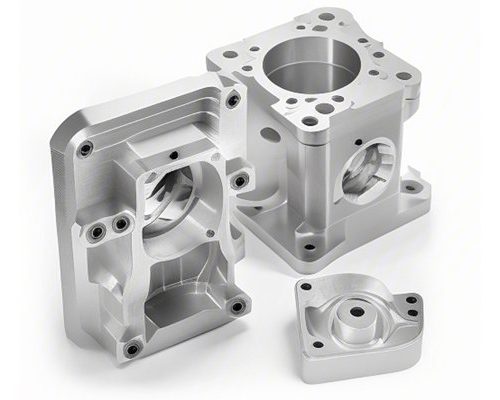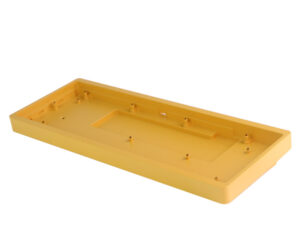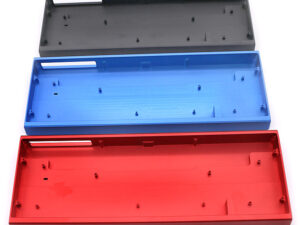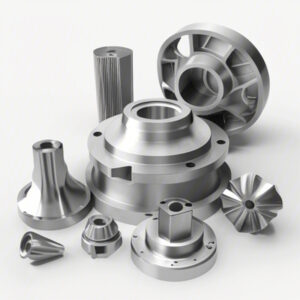*
In the ever-evolving world of shipbuilding, the materials we choose can dictate the very destiny of our marine vessels. As we stand on the precipice of technological advancements and environmental considerations, two heavyweights in this arena vie for attention: steel and aluminum alloys. Each material boasts its unique strengths and inherent quirks, making the decision not just a technical one but also a strategic imperative. At YL Machining, we understand that a well-informed decision rests on an intricate balance of advantages, disadvantages, cost-efficiency, and the intended use of the ship. Join us on this comprehensive voyage through the world of shipbuilding materials, as we anchor our insights and equip you with the knowledge needed to make the best choice for your next maritime venture.
—
1.
Steel, an alloy primarily composed of iron and carbon, emerges as a stalwart favorite in shipbuilding due to its remarkable strength and durability. It is often reinforced with various elements such as chromium, nickel, and molybdenum to enhance its properties, making it suitable for diverse marine environments.
1.
In contrast, aluminum alloys present a notable lightweight alternative. Composed mainly of aluminum mixed with other elements such as copper, magnesium, or silicon, these materials shine both in their resistance to corrosion and their excellent strength-to-weight ratio. This unique combination offers shipbuilders flexibility and innovation in design and usage.
—
2.
One of the most critical factors in shipbuilding is the structural integrity of the vessels. Steel’s high tensile strength—often measured around 370 MPa (megapascals)—enables it to withstand immense pressures from waves, cargo weight, and other external forces, making it an ideal choice for larger ships such as container vessels and tankers.
2.
When considering material cost, steel generally comes out on top. Prices fluctuate depending on the market, but steel often costs between $0.20 to $0.40 per pound in comparison to aluminum, which can range from $0.70 to $2.00 per pound due to the more complex extraction and alloying processes involved.
2.
Steel’s properties allow for straightforward fabrication and welding processes. With the right techniques, such as MIG (Metal Inert Gas) or TIG (Tungsten Inert Gas) welding, the joining of steel components becomes a relatively simple endeavor, enabling shipbuilders to assemble large sections with relative ease.
2.
When it comes to fire safety, steel naturally has an advantage. It possesses higher melting points and does not ignite easily, making it a preferable choice for certain vessels and applications where fire hazards are a concern, especially in non-passenger ships.
—
3.
The density of steel (around 490 lb/ft³) inherently leads to heavier constructions, which can increase fuel consumption and operational costs for marine vessels. For applications demanding speed and agility, such as leisure yachts, the bulk of steel can become a significant drawback.
3.
Despite advancements in protective coatings, steel is prone to rusting or corrosion when exposed to seawater. This requires regular maintenance and protective measures, increasing long-term operational costs.
3.
The steel industry has been traditionally associated with high carbon emissions, underlining the importance of considering suppliers’ environmental policies when selecting materials for shipbuilding.
—
4.
Aluminum alloys weigh substantially less than steel, typically around 170 lb/ft³. This lightweight quality enables the construction of faster and more fuel-efficient vessels, which is crucial in today’s competitive market where operating costs directly correlate with environmental impact and profitability.
4.
One of aluminum’s standout properties is its natural resistance to corrosion due to its oxide layer, which protects the material from seawater. This inherent durability allows ships constructed with aluminum to have longer service lives and reduced maintenance costs.

4.
The ally of artists and shipbuilders alike, aluminum offers a modern aesthetic with its sleek and bright surfaces. Its versatility allows for creative ship designs that can captivate and inspire.
—
5.
While aluminum alloys deliver commendable strength, they don’t quite measure up to steel in terms of sheer load-bearing capacity. The strength of high-grade aluminum alloys can peak at around 570 MPa, which might not be suitable for heavy-load vessels.
5.
As mentioned earlier, the extraction and fabrication processes for aluminum alloys tend to be costlier, leading to higher upfront expenditure—an important consideration for budget-conscious shipbuilders.
5.
Aluminum can be trickier to work with during the welding and fabrication processes compared to steel. Specialized techniques and equipment, such as pulsed MIG welding, can be required to avoid potential failure points and ensure structural integrity.
—
At YL Machining, we believe in the idea that no one material is universally superior; rather, the choice depends on the specific requirements of the ship and its intended use. Here’s a breakdown of considerations to determine the right material for your vessel.
6.
6.
When working under tight budgets, steel might emerge as the preferred option due to its lower upfront costs, but consider the total life cycle costs inclusive of maintenance.
6.
With stricter regulations in place affecting ship emissions, lighter and more energy-efficient aluminum might be a better choice for environmentally conscious projects.
6.
Evaluate how long you intend to keep the vessel. While aluminum presents lower maintenance costs over time, steel provides a robust alternative for long-term use when appropriately maintained.
—
The shipbuilding industry is in constant flux, and both steel and aluminum alloys are set to evolve as new technologies emerge. Innovations in coatings can help steel combat corrosion, while advancements in aluminum’s strength-to-weight ratio may make it even more appealing.
Additionally, composite materials and hybrid constructions may someday offer new pathways in ship design, combining the best of both worlds.
—
In the nuanced world of shipbuilding, the choice between steel and aluminum alloys is not merely a matter of numbers but a deeper dialogue that considers the ships’ purpose, financial constraints, environmental implications, and advances on the horizon. At YL Machining, we advocate for informed decision-making rooted in comprehensive knowledge and innovative solutions. As you navigate this critical decision, remember that every ship tells a story—let yours speak of strength, resilience, and the wise synergy of materials that create the maritime marvels of tomorrow.
—
Whether you lean towards the hearty embrace of steel or the agile grasp of aluminum, the ocean awaits your decision. With diligence, creativity, and a commitment to excellence, the voyage of shipbuilding is indeed a thrilling one. Here’s to setting sail with informed choices and creating waves of innovation in the world of maritime craftsmanship!




-300x225.jpg)


-300x225.jpg)






